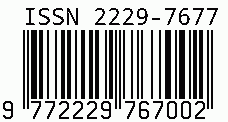
International Journal on Science and Technology
E-ISSN: 2229-7677
•
Impact Factor: 9.88
A Widely Indexed Open Access Peer Reviewed Multidisciplinary Bi-monthly Scholarly International Journal
Plagiarism is checked by the leading plagiarism checker
Call for Paper
Volume 16 Issue 2
2025
Indexing Partners



















RISE with SAP: Modernize Your Legacy ERP with an AI-Enabled Cloud ERP to Thrive in the Cloud
| Author(s) | Sreenu Maddipudi |
|---|---|
| Country | United States |
| Abstract | This article explores SAP’s transformative approach to business transformation through its RISE with SAP offering, which facilitates the modernization of legacy ERP systems into AI-enabled cloud solutions. By combining SAP’s powerful cloud technologies with Artificial Intelligence (AI), RISE with SAP empowers organizations to move from traditional, on-premise ERP systems to more agile, scalable, and intelligent cloud-based ERP solutions. This paper outlines the key benefits of adopting RISE with SAP, examining the technical architecture, AI integration, and cloud migration strategies involved in the modernization process. Through this offering, businesses can not only optimize their existing ERP environments but also leverage the full potential of AI-driven decision-making, real-time analytics, and operational automation to accelerate innovation and enhance competitiveness. The article also delves into best practices, deployment methodologies, and measurable outcomes that organizations can achieve by transitioning to a cloud-first ERP system powered by AI. |
| Keywords | RISE with SAP, Cloud ERP, Legacy ERP Modernization, AI-Enabled ERP, SAP S/4HANA, Cloud Transformation, Business Innovation |
| Published In | Volume 16, Issue 1, January-March 2025 |
| Published On | 2025-01-07 |
| Cite This | RISE with SAP: Modernize Your Legacy ERP with an AI-Enabled Cloud ERP to Thrive in the Cloud - Sreenu Maddipudi - IJSAT Volume 16, Issue 1, January-March 2025. DOI 10.5281/zenodo.14613947 |
| DOI | https://doi.org/10.5281/zenodo.14613947 |
| Short DOI | https://doi.org/g8x2xr |
Share this


CrossRef DOI is assigned to each research paper published in our journal.
IJSAT DOI prefix is
10.71097/IJSAT
Downloads
All research papers published on this website are licensed under Creative Commons Attribution-ShareAlike 4.0 International License, and all rights belong to their respective authors/researchers.

